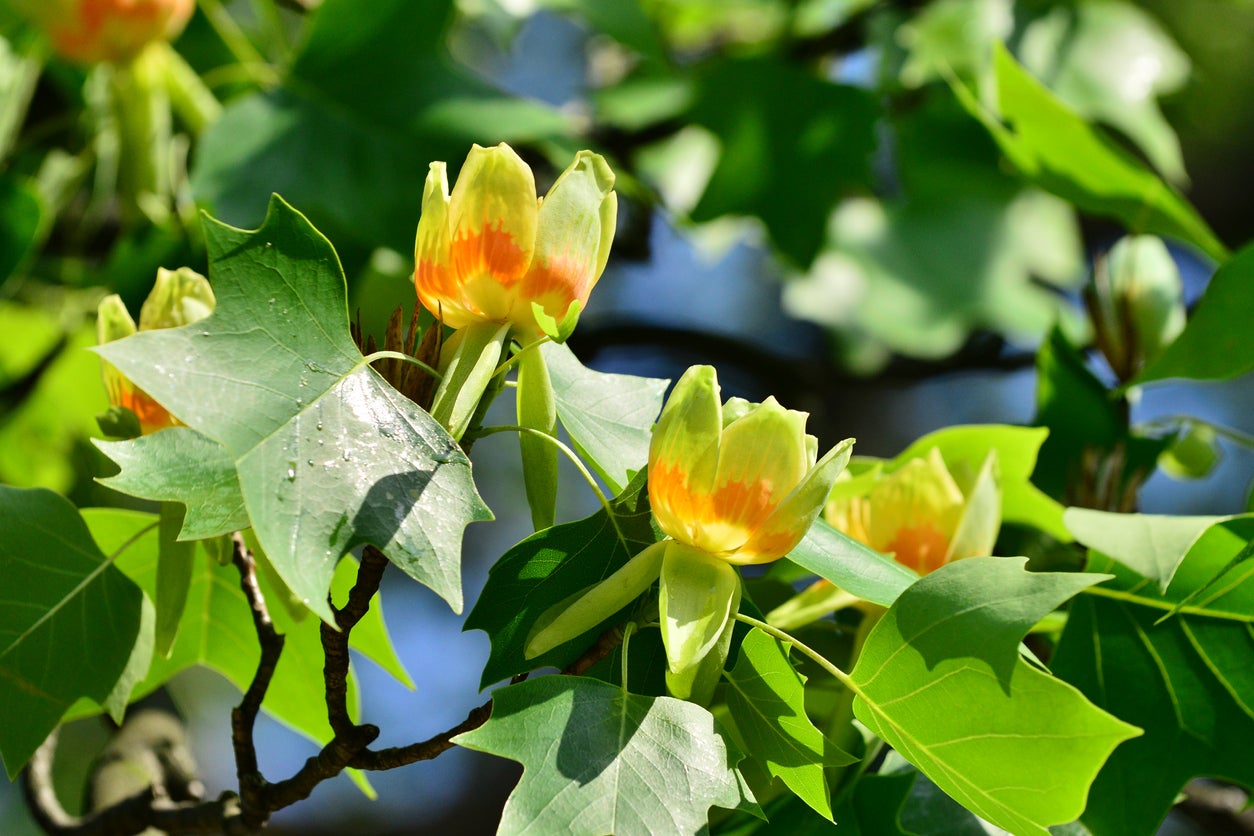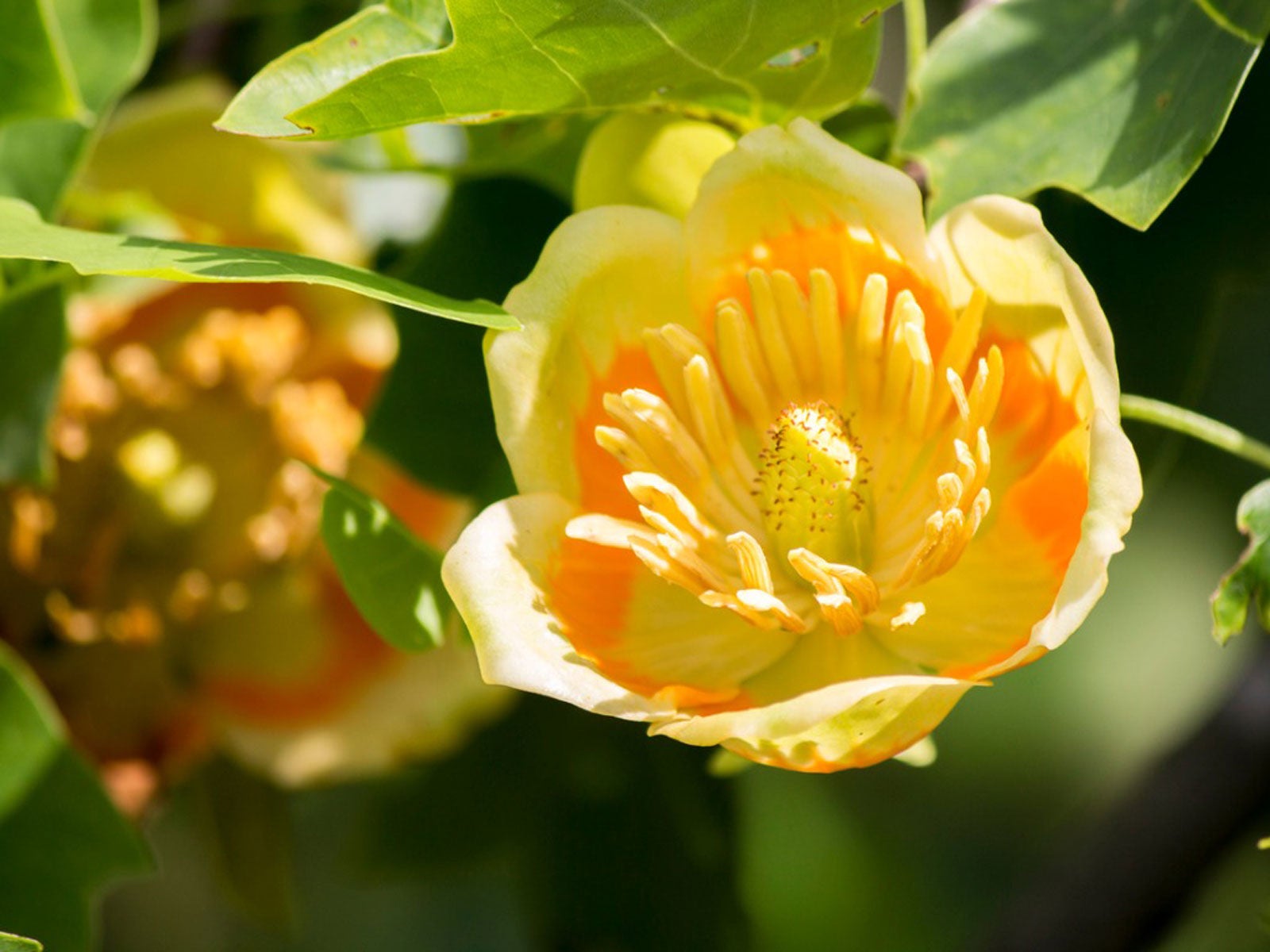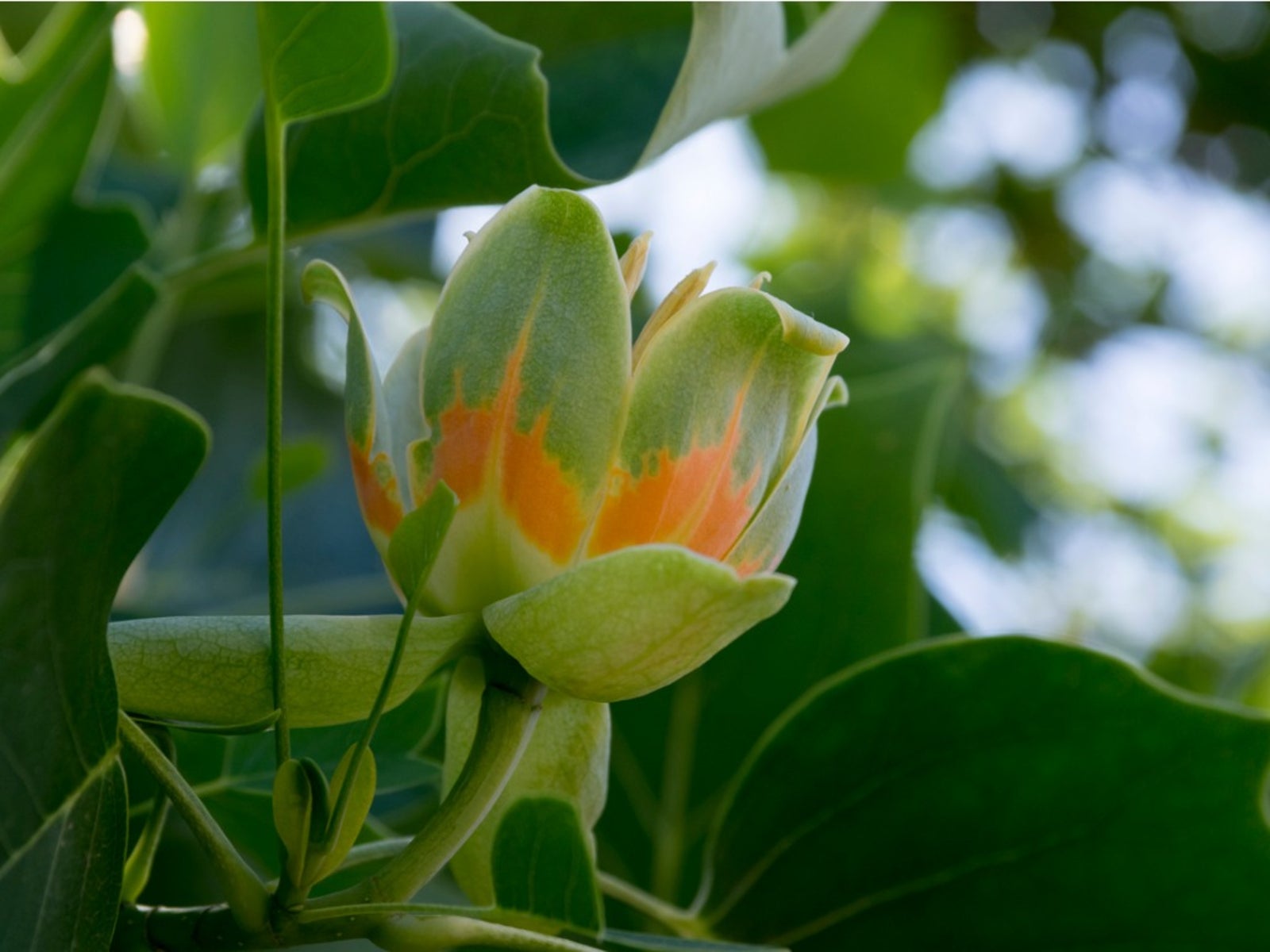About Tulip Trees: Tips On Growing And Caring For A Tulip Tree


Tulip trees (Liriodendron tulipifera) live up to their name with spectacular spring blooms that resemble the flowers. The tulip poplar tree is not a poplar tree and not related to tulip flowers but is actually a member of the Magnolia family. The plant isn't suitable for every landscape, as it can exceed 120 feet (37 m.) in height, but it is hardy in USDA plant hardiness zones 4 to 9. Considerations on where to plant tulip trees should also take into account the rapid growth and brittle branches of this native tree. Read on for information on how to grow and care for tulip trees.
About Tulip Trees
Look upward in April to June in parts of the east and southeast parts of the United States. During these months in the spring, the tulip poplar tree will be in full bloom with yellowish green to orange cupped fragrant flowers, 2 to 3 inches (5-8 cm.) in diameter covering the plant. The plant is attractive to numerous pollinating insects and birds. The leaves are also tulip shaped and can get up to 8 inches (20 cm.) long. Tulip poplar trees are deciduous and will lose their leaves in winter, but first you get a spectacular color display of brilliant golden foliage. An interesting fact about tulip trees is that they are the host plant for tiger and spicebush swallowtail butterflies.
Where to Plant Tulip Trees
Tulip trees prefer full sun locations with rich, moist soil that drains well. The plant starts out in a pyramid shape but matures to an arching dome, except where limited sun is available. In low light situations the branches can get skinny and weak. The plant has a fleshy root system that doesn't extend far out from the plant, so well worked soil is essential at planting. The tree tolerates drought poorly, so make sure it has access to water or give it supplemental irrigation in summer and early fall. The soil pH should be moderate to acidic. Make sure the tree will have ample space in the area you choose since it will become very tall and branch out up to 40 feet (12 m.).
How to Grow and Care for Tulip Trees
Caring for a tulip tree is relatively easy. Fertilize in early spring and watch for pests and disease. Stake young trees early on and train to one straight leader. Due to the rapid growth of this tree, pruning is essential. It poses a competitive challenge to other trees in the nearby area and the brittle branches pose a possible hazard to passersby. Prune out dead and weak growth in late winter to early spring and do a thorough thinning every few years. Don't allow the plants to dry out, but don't overwater either. Unfortunately, this tree is a victim to several canker diseases and poplar weevils. Combat the weevils with horticultural oil and the canker with an appropriate fungicide.
Gardening tips, videos, info and more delivered right to your inbox!
Sign up for the Gardening Know How newsletter today and receive a free copy of our e-book "How to Grow Delicious Tomatoes".

Bonnie Grant is a professional landscaper with a Certification in Urban Gardening. She has been gardening and writing for 15 years. A former professional chef, she has a passion for edible landscaping.
-
 Looking For Plants To Give You The Soft And Fuzzies? Try These 5 Fuzzy Leaf Plant Options
Looking For Plants To Give You The Soft And Fuzzies? Try These 5 Fuzzy Leaf Plant OptionsLovers of texture, drama, silver foliage and tactile plants will adore these special sensory garden additions. These fuzzy leaf plant options will leave you all aglow
By Susan Albert
-
 Get Ready For A Summer Of Hummers! Grow These Full Sun Hummingbird Plants and Flowers
Get Ready For A Summer Of Hummers! Grow These Full Sun Hummingbird Plants and FlowersIf you’re lucky enough to enjoy a sunny backyard, make sure you are maxing out on your pollinator opportunities and grow these full sun hummingbird plants and flowers
By Tonya Barnett
-
 My Tulip Tree Isn’t Blooming – When Do Tulip Trees Flower
My Tulip Tree Isn’t Blooming – When Do Tulip Trees FlowerIf your tulip tree isn’t flowering, you probably have questions. What do you do when a tulip tree won’t flower? For answers, click here.
By Teo Spengler
-
 Propagation Of Tulip Trees – How To Propagate A Tulip Tree
Propagation Of Tulip Trees – How To Propagate A Tulip TreeIf you have one tulip tree on your property, you can propagate more. Propagation of tulip trees is either done with tulip tree cuttings or by growing tulip trees from seeds. Click this article for tips on tulip tree propagation.
By Teo Spengler
-
 Poplar Weevil Information: Tips For Managing Yellow Poplar Weevils
Poplar Weevil Information: Tips For Managing Yellow Poplar WeevilsWeevils, weevils, everywhere - or at least it seems like it when your yellow poplar tree has got a bad case of yellow poplar weevils. Find out how to manage these annoying pests in this useful article.
By Kristi Waterworth